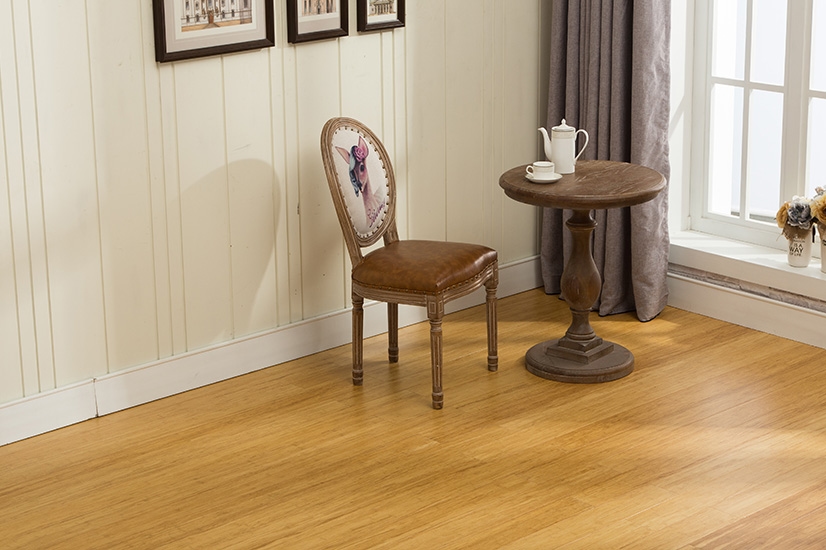
Engineered bamboo flooring has been gaining recognition not only for its strength and beauty but also for its reputed resistance to moisture. But is that reputation built on fact, or is it just clever marketing?
As a bamboo flooring factory technologist with years of hands-on experience, I can tell you that moisture resistance in engineered bamboo floors is very real—when the right materials and construction methods are used. Let’s explore how this unique flooring technology works, what makes it resilient, and how it connects deeply with cultural values and aesthetics that go far beyond just performance.
Love China, Love Bamboo: A Material Rooted in Culture
Bamboo is more than just a plant—it’s a symbol woven into the cultural fabric of China. For centuries, it has represented humility, resilience, and strength. A classic Chinese saying goes: “Love China, love bamboo.” This isn’t just poetic—it reflects a deep appreciation for a material that has stood tall in both nature and tradition.
Engineered bamboo flooring carries that legacy forward. It’s not just flooring; it’s a walk through a bamboo forest, reimagined for modern interiors. You can feel that connection under your feet—the natural grain, the gentle texture, the calm of something ancient and enduring.
Engineered Bamboo vs. Solid Bamboo
Before diving into moisture resistance, it’s important to understand what sets engineered bamboo apart from solid bamboo.
Solid bamboo flooring is made from compressed bamboo strands or horizontal/vertical layers of bamboo strips.
Engineered bamboo flooring consists of a real bamboo veneer on top, bonded to a high-density core (often eucalyptus or multi-layer plywood), and finished with a durable wear layer.
This structure is what gives engineered bamboo its edge in environments where moisture may be a concern—such as basements, kitchens, and regions with fluctuating humidity.
The Science Behind Moisture Resistance
Engineered bamboo flooring is built to handle moisture better than solid bamboo, primarily because of its multi-layer construction. The core layers are cross-laminated, which means the grains run in alternating directions. This technique stabilizes the plank and minimizes expansion and contraction in response to humidity.
Think of it like this: If solid bamboo is a single strong tree, engineered bamboo is a woven structure of branches, flexible and balanced. It still holds the strength of bamboo but adapts better to change.
Here’s what contributes to its moisture resistance:
Stability of the Core: High-quality cores, such as eucalyptus or marine-grade plywood, resist warping and swelling better than solid bamboo.
Protective Coatings: UV-hardened aluminum oxide finishes seal the surface against spills and moisture penetration.
Precision Milling: Tight click-lock systems reduce gaps where water could seep in.
Factory Conditioning: Bamboo is processed and dried to very low moisture content before assembly, reducing the risk of internal movement after installation.
A Hard and Durable Performer
Despite its graceful appearance, engineered bamboo is hard and durable, rivaling even oak and maple. The top bamboo layer, sourced from 5 to 6-year-old Moso bamboo, is compressed and carbonized using advanced methods, giving it both density and stability.
With a density of over 750 kg/m³, the wear layer on engineered bamboo planks offers excellent resistance to foot traffic, scratches, and daily wear. This means moisture isn't the only thing it resists—it also stands strong against impacts and abrasions, making it ideal for both residential and light commercial settings.
Walk Like in a Bamboo Forest: A Unique Look
There’s something special about walking across engineered bamboo flooring—it feels natural, peaceful, and grounded. The visual texture and tonal variation mimic the way sunlight filters through a dense bamboo grove. Whether carbonized for a deeper tone or kept natural for a light, airy effect, each plank reflects the graceful rhythm of the forest.
No two boards are exactly alike. The unique look of engineered bamboo brings a sense of nature indoors, blending seamlessly with both traditional and contemporary design aesthetics. It's a floor that tells a story—of craftsmanship, nature, and cultural heritage.
Moisture Resistance: Fact, Not Fiction
Let’s be clear: engineered bamboo flooring is not waterproof. No real wood product is. But with the right construction, installation, and care, engineered bamboo is highly moisture-resistant—a fact proven by lab tests and real-world performance.
It resists minor spills, handles changes in humidity, and offers dimensional stability that solid bamboo alone can’t match. When installed over a proper vapor barrier and maintained correctly, it performs exceptionally well in areas where traditional hardwood might fail.
A Floor That Honors the Past and Meets the Present
Engineered bamboo flooring is a fusion of traditional wisdom and modern innovation. It honors the cultural symbolism of bamboo—strength, beauty, humility—and adapts it for the challenges of modern interiors.
When you install engineered bamboo in your home or office, you’re not just choosing a moisture-resistant floor. You’re choosing to walk through a bamboo forest, to bring a piece of China’s most enduring symbol into your daily life, and to enjoy the hard, durable benefits that come with it.
So yes—moisture resistance in engineered bamboo floors is a fact. And it’s only one of the many reasons bamboo continues to stand tall, both in nature and in our homes.
